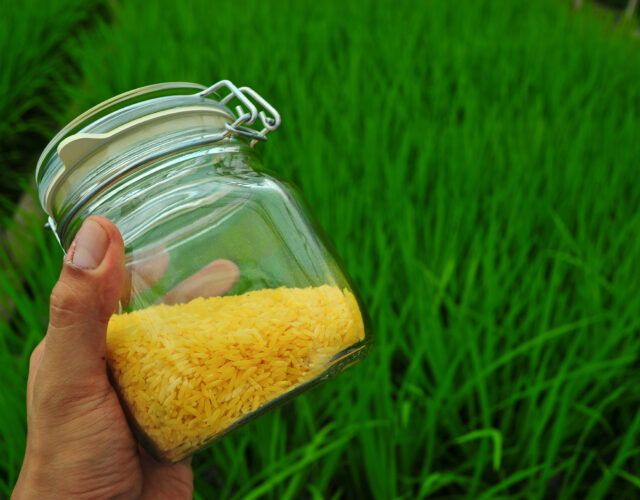John T. Lang. What’s So Controversial about Genetically Modified Food? Reaktion Books, 2016. 184 pp. $20.
Farmers have bred animals and plants for more desirable traits and better yields for many centuries, but only in the early 20th century did scientists begin to understand and experiment with genes. Human intervention continued to change domesticated species, but it was an indirect intervention, limited to cross-breeding within a species or among closely related ones.
Enter biotechnology and recombinant-DNA techniques, which since the 1970s have made it possible to hybridize among very different species. Molecular biologists, working as plant breeders, can splice a segment of bacteria DNA into a corn plant to improve that plant’s resistance to boring insects. And scientists can change the characteristics of plants and animals by adding or subtracting specific genes or gene segments. At the same time, the whole system of global agriculture, along with its economic and political frameworks, has changed. Large corporate farms are continuing to replace family farms. Seed companies and agricultural chemical suppliers alike continue to consolidate through mergers and acquisitions, creating ever larger corporate entities.
Food is of course more than just nutrition, science, or business. People imbue it with deep religious, social, and cultural significance. The result is that the dramatic and rapid shifts the introduction of genetically modified organisms have made to our food supply have evoked an understandably complex series of responses. Sociologist John T. Lang argues in his book What’s So Controversial about Genetically Modified Food? that these responses—based in economics, science, religion, culture, and ethics—are all valid and need to be taken into account by those responsible for feeding the world. But Lang also points out that people continue to talk past each other, with arguments and counterarguments about the benefits and drawbacks of new agricultural products and with perspectives that arise from widely different frames of reference. So while the technical merits of an herbicide-resistant seed may be clear to all, opposition to it may come from a belief that the technology gives an unfair advantage to large farms and even larger seed companies. And while companies like Monsanto may convince a majority of farmers of the better yield and thus profit from improvement of a product like Roundup Ready Corn, socially conscious consumers argue that the food production and distribution system must also address environmental destruction, labor exploitation, poverty, and stunted development in the global South.
Lang breaks down all these points of view without passing judgment. He does, however, clearly point out who benefits and who does not. For example, while the improved yields and greater revenue per acre of genetically engineered seeds do economically benefit large-scale farmers, a major economic benefit also accrues to the seed companies and agricultural chemical suppliers. Those who are not in this portion of the global food chain, such as consumers with no connection to the production of food, may see no benefit. It is this imbalance of economic benefit that raises the suspicion of injustice, particularly in the minds of those who do not farm in this way or who are critical of the greedy behavior of agricultural corporations.
For the many, many people dependent on subsistence agriculture, genetic engineering is not an issue; simply getting anything to eat is the beginning and end of the discussion. But for those accustomed to having a choice, options are diminishing because of the rapid consolidation of global food production and distribution methods. And if this consolidation continues and the global food-production industry adopts genetically modified organisms as its preferred crops, then choice disappears for the industrialized world. For some the projected food needs of the expected 10 billion people on Earth by 2050 require a choice between increasing famine or a production increase courtesy of genetic engineering. Others believe that food production can be increased without dramatically modifying the inherent structure of plants and animals.
Lang understands the technology involved as well as the societal forces in play. His balanced and engaging exposition is well worth the couple of hours it takes to read. And it should be required reading for any scientist struggling to understand those who do not accept the “tremendous benefit” of genetic modification after so many years of use without incident.






